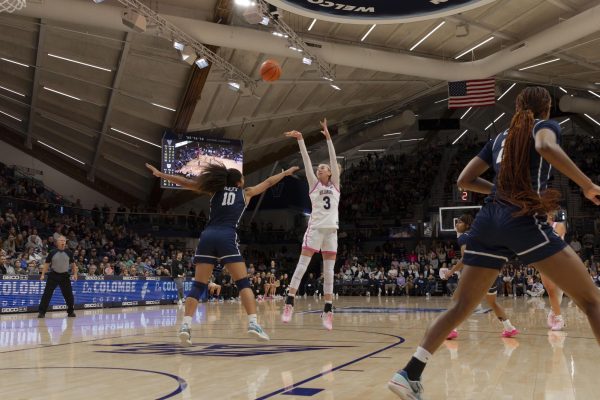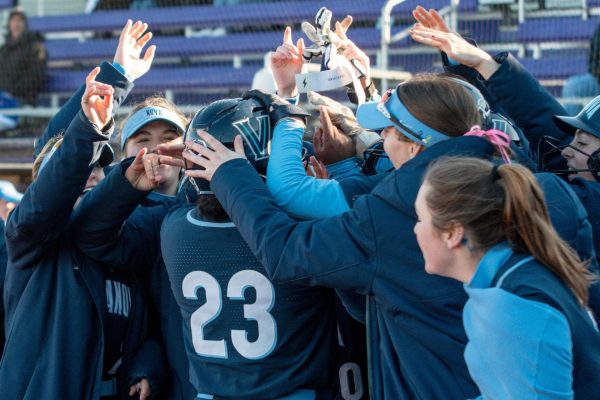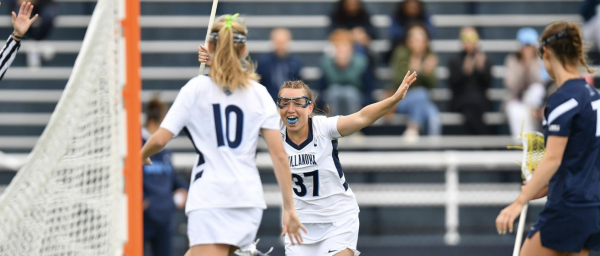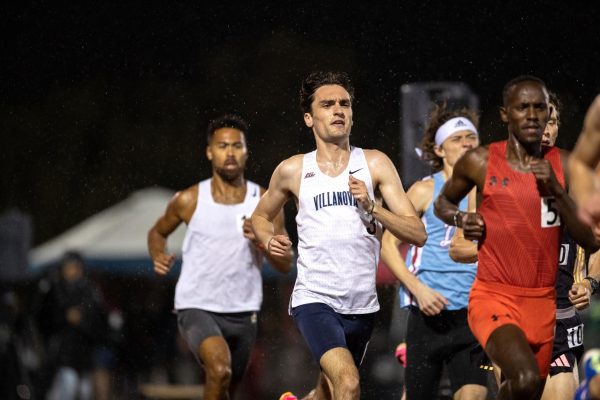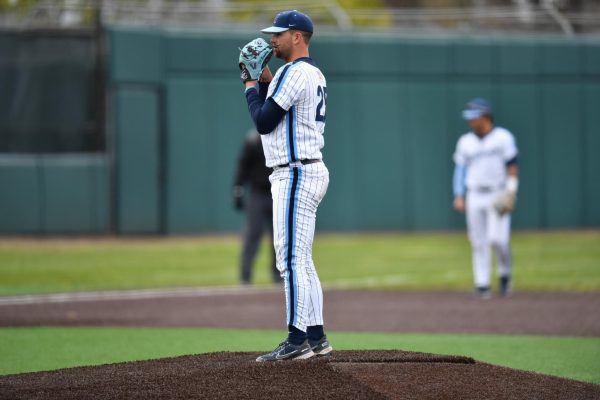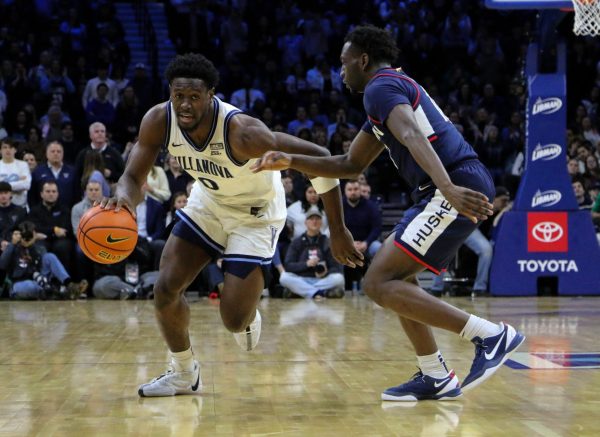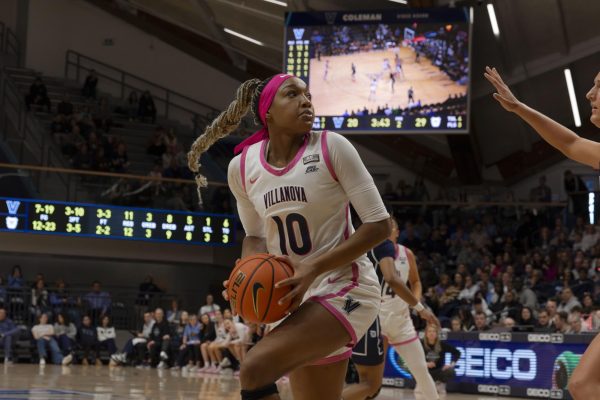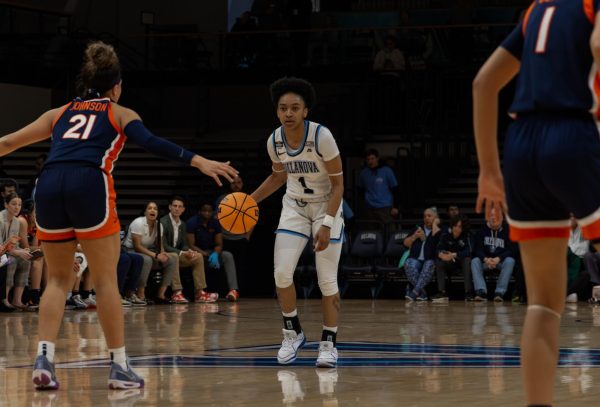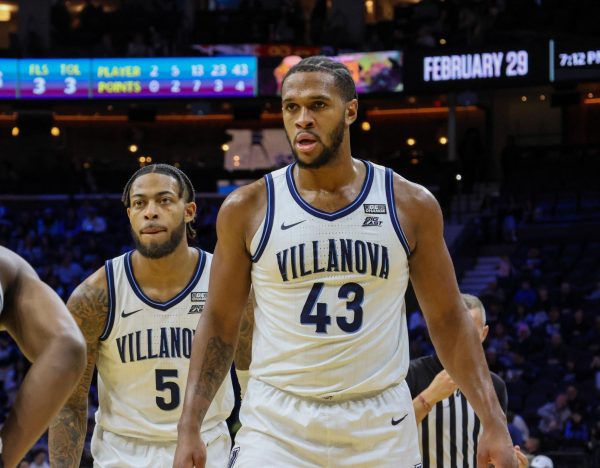Glaring Inequality Inside the NCAA Tournament Bubble
Glaring Inequality Inside the NCAA Tournament Bubble
March 31, 2021
Upon their arrival to the women’s NCAA Tournament in San Antonio, the top women’s college basketball players in the country saw amenities and accommodations that were grossly unequal compared to those offered to their male counterparts at the men’s tournament in Indianapolis.
The “weight room” for these Division I athletes consisted of a single stack of six pairs of weights and yoga mats piled on a folding table. The men’s side, by comparison, more closely resembled the floor of a regular gym, including racks and platforms. As images of the weight facilities went viral on social media, other disturbing tidbits slowly came to light. In contrast to the option-rich buffets served in the men’s bubble, the women were receiving small pre-packaged meals. The women’s teams were also receiving less reliable COVID-19 antigen tests, while the men’s teams were receiving the gold standard PCR tests. Even the women’s “swag bags” were less impressive, as they received a t-shirt and water bottle, while the men received backpacks, full outfits and more. Rather than facilitating full access to the media in a year when coverage has already been stifled by the pandemic, the NCAA further cut costs by opting not to staff the women’s tournament with any photographers for the first two rounds, but published thousands of photos of the opening games of the men’s tournament.
Unable to refute the clear discrepancy between the women’s and men’s amenities, the NCAA initially hid behind a statement blaming the “controlled environment” of the pandemic and claiming that the discrepancy in the weight facilities was due to the lack of space for the equipment in the women’s bubble. But that was quickly debunked by a video posted by Oregon sophomore Sedona Prince.
The NCAA has long been a part of the problem. That’s because the protections provided by Title IX to shield student-athletes from this sort of unequal treatment do not apply to the NCAA because it is a nonprofit. While most of the colleges and universities that comprise the NCAA receive federal funding, the NCAA itself does not. The NCAA has publicly stated in the past that they will voluntarily comply with Title IX’s mandates, and today proclaims on its website that it strives to establish “an environment that is free of gender bias.” But its words do not consistently translate to meaningful action, and the NCAA has exploited this legal loophole for years.
Although the NCAA has supported women’s sports as they have grown in popularity, there is no dispute that the NCAA has never given the women’s side the same support it extends to men.
Most glaringly, the NCAA has deemed women’s basketball consistently unworthy of its biggest financial prize: bonuses paid out to conferences for wins by their teams in the NCAA tournament, which, in turn, trickle down to the universities and colleges. From 1997 to 2018, the NCAA dished out over a billion dollars to the top five men’s conferences. By comparison, the NCAA has not contributed a penny for a single win in the women’s tournament since 1982.
The justification offered by the NCAA for this different treatment is that the women’s basketball tournament doesn’t bring in enough revenue. But the NCAA has also failed to disclose what the revenues and costs are for the women’s tournament, let alone how they measure up to the men’s. Even if the numbers showed that the NCAA cannot economically justify the same level of bonuses for the women’s tournament, it has never provided a reason it could not reward wins in a more limited fashion. The NCAA recently confirmed that it’s not pushing for any changes in the bonus structure.
As others have argued, the NCAA’s refusal to reward the victories of teams in the women’s tournament sends the message that it views women’s teams as less worthy, at least financially.
As the NCAA recognizes in its own Title IX document, gender equality is not just about money; it is about benefits and opportunities. This includes benefits for player health, safety and well-being, particularly given that the NCAA decided to move forward with March Madness against the backdrop of a pandemic.
Unsurprisingly, the inequalities in the men’s and women’s bubbles have been met with significant backlash from players, coaches, fans and the media. Dick’s Sporting Goods announced its willingness to bring “truckloads of fitness equipment” to the rescue in San Antonio. OrangeTheory Fitness similarly offered to open its studios for private sessions and to deliver floor and weight equipment.
In response to its public shaming, the NCAA remedied the weight room problem by finding resources it lacked previously, seemingly overnight. To remedy a systematic problem, the NCAA needs to undergo systemic changes. For that to happen, this momentum for change cannot fizzle out. For years, the NCAA appears to have been operating under the assumption that it can escape unscathed when it treats women’s basketball as less than. That can no longer be the case. If the NCAA cannot be held legally accountable, it must be held socially accountable.
Finally, the NCAA itself needs to follow through in affecting real, sustained change. Otherwise, the NCAA’s commitment as a guarantor of Title IX’s protections will remain devastatingly superficial.



